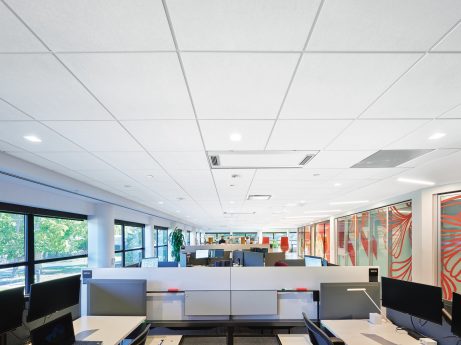Filter:
Integration of Armstrong TEMPLOK Ceilings in leading energy modeling software supports architects, consultants, and engineers in optimizing building performance
An LA office modeling study explains how TEMPLOK Ceilings contribute to heating and cooling savings.
Exterior Architectural Metal (EAM) systems enhance building performance, aesthetics, and sustainability while streamlining installation.
Choosing the right ceiling and wall panels creates an inclusive space for all students and boosts lunch participation by 15%.
Integration of in-house software with CAD specialist direction identifies material savings opportunities to help architects & designers increase project sustainability.
Experience a guided tour of our mineral fiber manufacturing facilities. Learn about construction methods and materials, sustainability processes, and more. View CEU details.
Experience a guided tour of our metal manufacturing facilities. Learn about construction methods and materials, sustainability processes, and more. View CEU details.
Plus two new wood-look finishes, further expanding the portfolio of wood and wood-look options.
Discover how ceiling and wall solutions can address the diverse needs of transportation venues, and enhance occupant experience. View CEU details.
While finalizing the design, the architects were introduced to LYRA PB Wood-Look Ceiling Panels, a new product from Armstrong that would provide the natural beauty of wood while absorbing up to 95% of the noise in the space.
With wood and wood looks continuing to be important design elements, AWI's ability to deliver a wood look in four weeks or less is a big advantage for customers.
Nation’s first ceilings recycling program, supporting circularity in the built environment.










